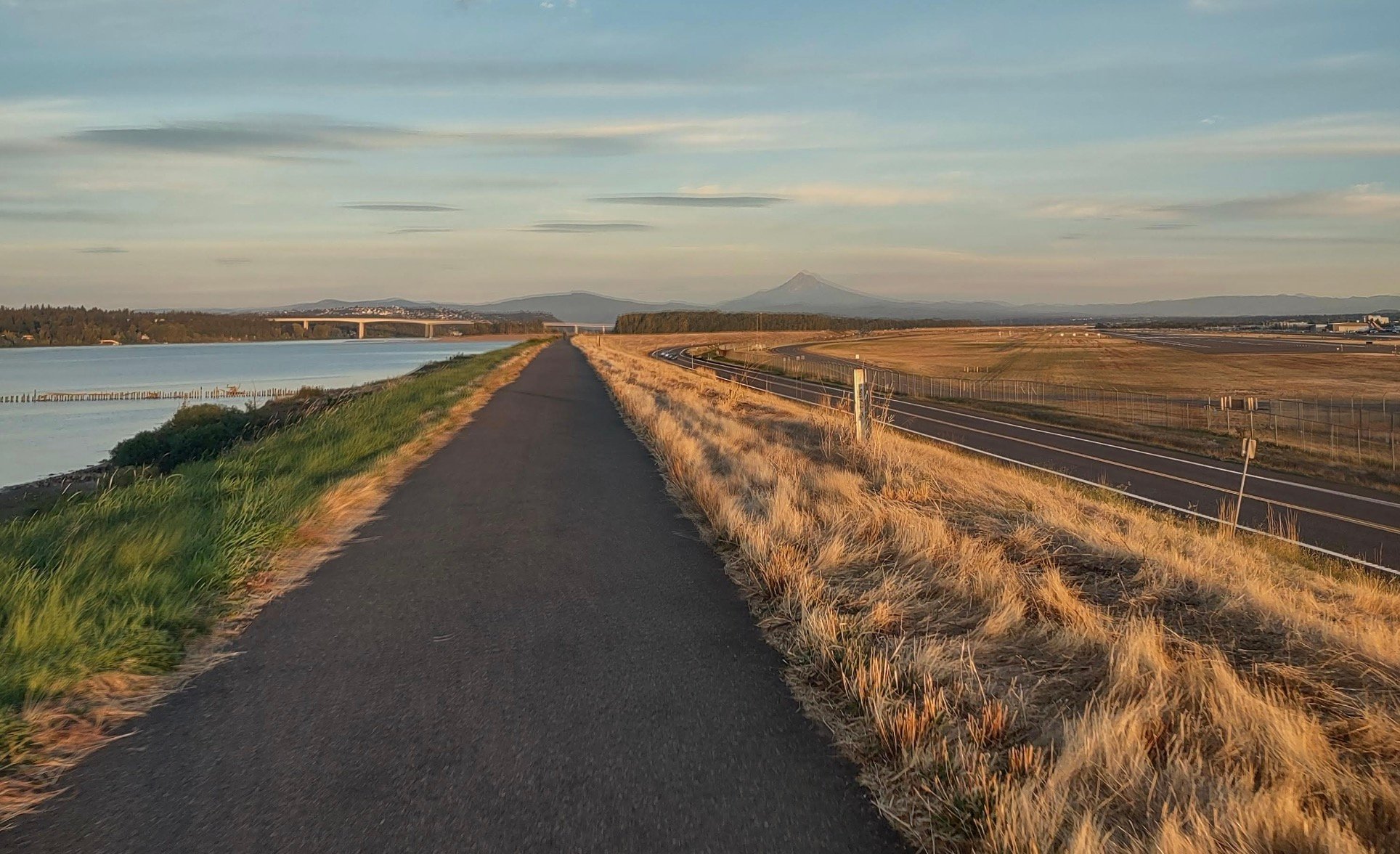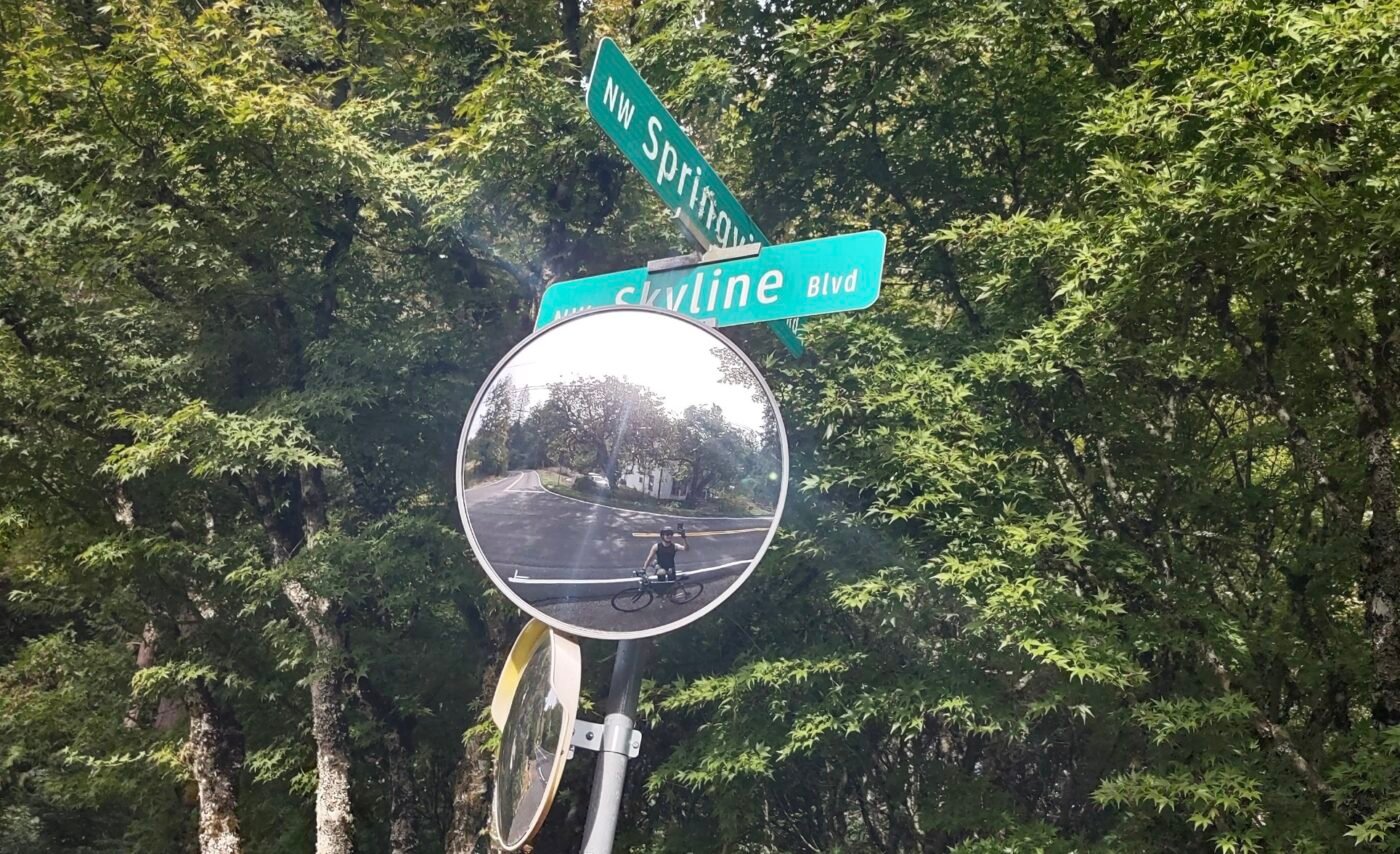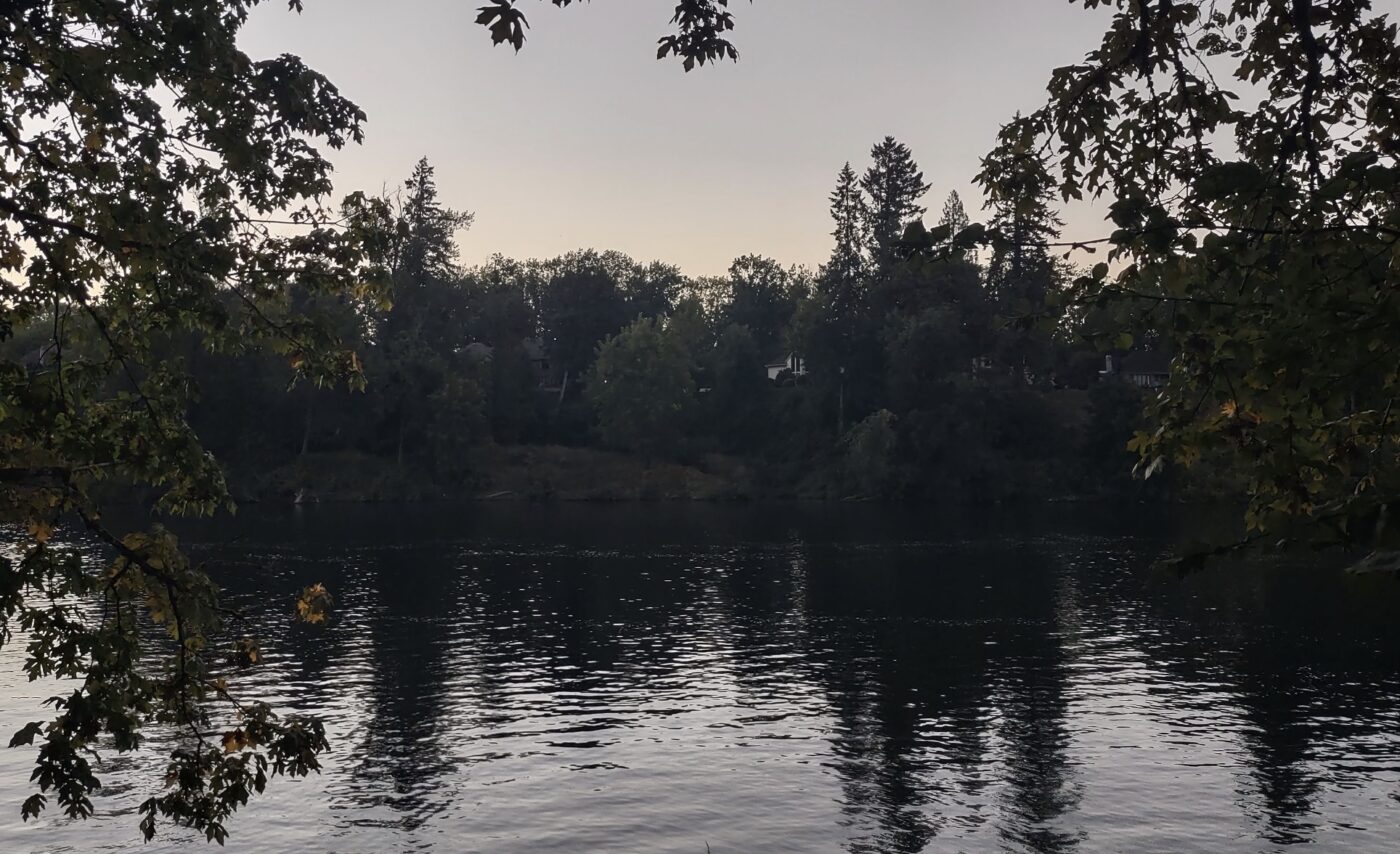The dividing line between urban and rural in the Portland region isn’t just an intangible idea. It’s a politically significant demarcation known as the urban growth boundary (UGB). For many of us who like to ride far beyond the city center, the line has a visceral impact. We can not only often see the border in pavement and rooftops, but we can feel how our relationship with the land changes as we pedal beyond it.
Few people in our region know what these changes look like more than Portlander Linus Unitan, a third-year medical student at Oregon Health & Science University. On Sunday, Unitan rode for over 17 hours to complete an impressive, 234-mile circumnavigation of the UGB. His ride took him as far north as Kelly Point Park, east to the Sandy River, south to Oregon City, and west to Forest Grove.
I talked to Linus in a video interview Monday morning. You can watch our conversation in the player above, on YouTube, or read the slightly edited version (and view photos of the ride) below.
Jonathan: Tell us what you’ve just done!
Linus: I rode all the way around the metro area’s urban growth boundary, it was about 235 miles or so. The route was very much a subjective endeavor, because a lot of the route goes places where there aren’t roads or there aren’t bridges. So I tried to stick to the streets. I tried to stick to where the bridges are, and yeah, just went around the whole thing, 234 miles or so. It was a great ride.
Jonathan: Back up just a little bit here. Tell us who you are.
Linus: I am a third year medical student at OHSU. So that’s kind of kind of my day job at the moment,. I’ve been riding bikes for little over two years now, got into the scene through Pedalpalooza, and then it just sort of spiraled from there. I realized I was into this more distance stuff. So I did a few centuries, a few 200 km rides every now and again.
Jonathan: Why the urban growth boundary? What about that route attracted you?
Linus: I kept going on these long rides that would stretch outside of town, out into kind of more rural areas. And oftentimes, when I reached the edge, I would find these suburban housing developments that were just being built — like they had just laid the streets down, but there weren’t any buildings yet. And you can ride on these streets and go to intersections with stop signs that are stopping non-existent traffic, and you feel like you’re very much still in the middle of a field, and yet there will be houses there within a couple years. So it’s a very surreal place. And I thought, I need to find more of these. So there’s big ones in Happy Valley, there’s big ones in Bethany, and these were areas that were added to the urban growth boundary in the late 90s and early 2000s, so I figured I just need to see where more of these places are and doing the whole route was a great way to find them.





Jonathan: The usual places hear about the urban growth boundary are pretty wonky urban planning, you know, Metro regional government kind of spaces — not bike route spaces. So are you into urban planning? Is that part of the interest for you?
Linus: I am interested in the policy that informs the lived reality that we’re in. I feel like Oregon in particular, it’s progressive environmental history when it comes to even getting the urban growth boundary to exist at all is just super fascinating. But when it comes to making the decisions and negotiating between all the interested parties, Oh man, that is super complicated. I’m just going to ride my bike.
Jonathan: Given the fact that you’ve been on literally the front line of the UGB — something that’s often the subject of major debates — do you feel like you have any deeper sense of the issue personally?
Linus: It’s hard. There are a lot of different people who want a lot of different things and existing in these spaces, standing at intersections where there aren’t any houses yet, but houses are soon to be, you definitely get a sense of, ‘Okay, there, there will be a thriving community here before too long.’ And these suburban developments where the houses all kind of look the same, can still have really, really diverse groups of people living in them. And we need housing, right? I can preach about how density is good, all I want, but that’s coming from a very urban perspective, right? And there will be people who want to live suburban lifestyles, and maybe there should be houses for them? It’s a really complicated thing to witness.
Jonathan: I’ve been at those areas where I can tell that the development is just starting, I’ve felt a little wistful, sometimes like a sense of loss. Do you feel any sense of loss when you’re out there?
Linus: I don’t know about loss. Change for sure. You definitely notice the really, really sharp lines between houses on your left, and then just fields on on your right. So definitely, definitely change. But I still ride out in Beaverton a fair amount. I feel like you can still get some good riding in even in communities where people live and we’re just so lucky to have the urban growth boundary.
Jonathan: Can you recall a most memorable, or your favorite part of the ride?
Linus: My favorite part was the first rays of sunlight hitting right as I was crossing the I-5 bridge in Wilsonville. I’d done 100 miles in the dark, the freeway shoulder was gnarly, loud, gravel and debris everywhere. The sunrise after all that was out of this world. Four hot air balloons to the south. Just amazing.
Jonathan: What bike did you ride?
Linus: I rode a titanium road bike that I bought off Craigslist from a guy who was moving to Spain and selling everything he owned. So it cost me $1,000 and it was worth every penny. I love that bike.
Jonathan: Tell me about the pro tip you unlocked with the loaf of bread hanging from your bike for safety [something I saw Linus post on his Instagram story yesterday].
Linus: I had reached maybe mile 125 or so and desperately needed a store stop. There was a 24-hour Plaid Pantry in Oregon City, and then it was just closed Safeway after closed Safeway, until I got to Sherwood. Sometime after dawn, I desperately needed food, and so I’m walking around this Safeway, I see the like, you know, pile of clearance baked goods. And being a medical student, wanting to save some money, I reached for this loaf of bread and didn’t have a great way to carry it on on my bike when when I was riding. So I tied it to the back of my bag and had it just sort of hanging there loosely. And from for the rest of the day, the cars were pretty kind to me. I didn’t get coal rolled at all. I didn’t get people passing too close to me.
I don’t know what it was, but I feel like I unlocked some sort of secret where people see this loaf of bread hanging off of the back of your bike. And it’s some grand humanizing thing, like maybe they see you are also a human who also enjoys to eat bread so like, ‘I’m going to be kind to you.’ It reminded me a lot of in Lord of the Rings when Samwise Gamgee has this backpack with cast iron pans hanging off of it, which seems ridiculous when you realize the journey that they’re on, right? But that backpack looks a lot cuter with the pots and pans hanging off of it. So maybe, maybe, the more we can do to humanize ourselves, the better, right? We’re still humans when we’re wearing lycra and biking down the road. People should always be kind to each other, but boy does it help when you can kind of advertise your humanity in some way!
Jonathan: Anything else that you want to say?
Linus: If here’s some crazy ride you want to do, just do it. It’s so much fun. You get to see so much. And if you eat and you hydrate and you keep an eye on your electrolytes, you are capable of so much more than you know. So just go out there and do it. You’ll have a blast.
View the route on Ride With GPS:





